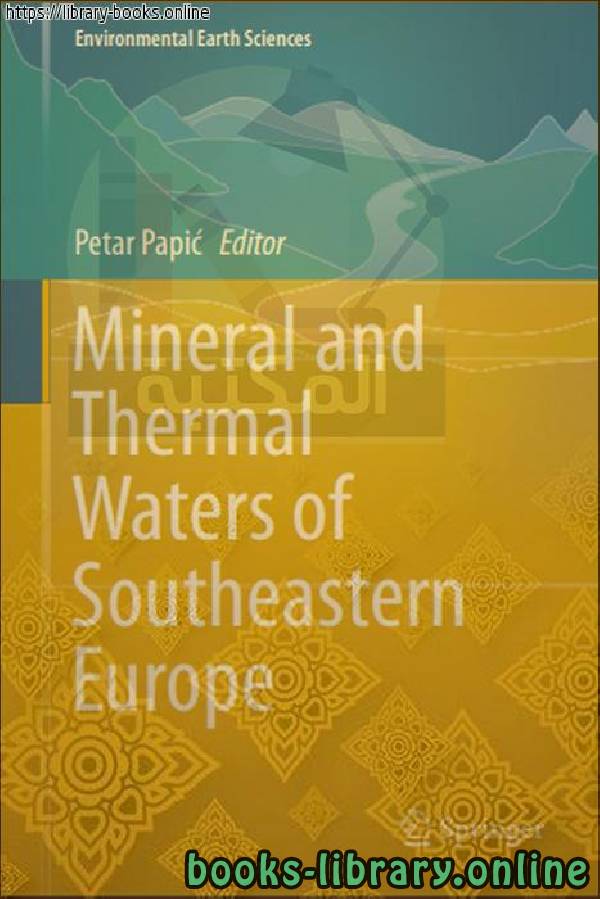كتاب Lakes and Wetlands
نبذه عن الكتاب: the concentration of ions—charged atoms or molecules—present in water. Certain lakes, such as Great Salt Lake in Utah (U.S.) and the Dead Sea in the Middle East, have salinity levels higher than that of the world’s oceans. The majority of lakes, however, have ion concentrations so low that salinity level becomes negligible. Soluble salts in the surrounding rock, which gradually erodes and flows into lakes via streams and rivers, determine salinity. Many other inorganic compounds such as various plant nutrients (e.g., phosphates and nitrates), heavy metals (e.g., mercury), and polychlorinated hydrocarbons (e.g., DDT) may also find their way into a lake by these means, although rainfall and wind-borne air particulates are culprit methods of addition as well. Numerous interacting variables influence the life cycle of a lake, among them temperature variants within lake strata and the extent to which light penetrates into the deeper waters. Solar radiation, inflows and outflows of water, and the effects of wind cause temperature change; currents and wave action each directly affects the temperature map of a lake. These temperature zones within lakes are further affected by clastic sediments (clay, silt, sand), organic debris, and chemical precipitates. In general, lakes undergo heat transfers vertically, which causes mixing of the waters to the extent that thermocline, or heat-gradient, regions will “flip.” For example, the uppermost lake waters, characterized by temperatures near freezing (0 °C [32 °F]) in the early spring, absorb heat as the weather warms. The density of the water in these upper layers will increase until the water temperature exceeds (4 °C [39.2 °F]). If the density of the upper layers of the lake is greater than that of the lower layers, the water in the upper layers sinks, and the lake water overturns.Britannica Educational - ❰ له مجموعة من الإنجازات والمؤلفات أبرزها ❞ Lakes and Wetlands ❝ ❱
من Biology Books علم الأحياء - مكتبة الكتب العلمية.

قراءة كتاب Lakes and Wetlands أونلاين
معلومات عن كتاب Lakes and Wetlands:
the concentration of ions—charged atoms or
molecules—present in water. Certain lakes, such as
Great Salt Lake in Utah (U.S.) and the Dead Sea in the
Middle East, have salinity levels higher than that of the
world’s oceans. The majority of lakes, however, have
ion concentrations so low that salinity level becomes
negligible. Soluble salts in the surrounding rock, which
gradually erodes and flows into lakes via streams and
rivers, determine salinity. Many other inorganic compounds such as various plant nutrients (e.g., phosphates
and nitrates), heavy metals (e.g., mercury), and polychlorinated hydrocarbons (e.g., DDT) may also find
their way into a lake by these means, although rainfall
and wind-borne air particulates are culprit methods of
addition as well.
Numerous interacting variables influence the life
cycle of a lake, among them temperature variants within
lake strata and the extent to which light penetrates into
the deeper waters. Solar radiation, inflows and outflows
of water, and the effects of wind cause temperature
change; currents and wave action each directly affects
the temperature map of a lake. These temperature zones
within lakes are further affected by clastic sediments
(clay, silt, sand), organic debris, and chemical precipitates. In general, lakes undergo heat transfers vertically,
which causes mixing of the waters to the extent that
thermocline, or heat-gradient, regions will “flip.” For
example, the uppermost lake waters, characterized by
temperatures near freezing (0 °C [32 °F]) in the early
spring, absorb heat as the weather warms. The density
of the water in these upper layers will increase until the
water temperature exceeds (4 °C [39.2 °F]). If the density
of the upper layers of the lake is greater than that of the
lower layers, the water in the upper layers sinks, and the
lake water overturns.
سنة النشر : 2011م / 1432هـ .
عدد مرات التحميل : 3690 مرّة / مرات.
تم اضافته في : الثلاثاء , 28 يناير 2020م.
حجم الكتاب عند التحميل : 4.394 .
تعليقات ومناقشات حول الكتاب:
Biologically
Biology is a natural science that is concerned with the study of life, its various forms and its function, how these organisms interact with each other and with the surrounding environment. The word biology in Greek is made up of two words: bio (βίος) meaning life. And loggia (-λογία) means science or study. Biology: the similarity of vegetation and animal cover on the edges of the African and American states, and the existence of the same fossil.
Branches of biology
Biology is an ancient science thousands of years old and modern biology began in the nineteenth century. This science has multiple branches. Among them are:
Anatomy
Botany
Biochemia
Biogeography
Biofisia
Cytology or cell science
Ecology or environmental science
نبذه عن الكتاب:
the concentration of ions—charged atoms or
molecules—present in water. Certain lakes, such as
Great Salt Lake in Utah (U.S.) and the Dead Sea in the
Middle East, have salinity levels higher than that of the
world’s oceans. The majority of lakes, however, have
ion concentrations so low that salinity level becomes
negligible. Soluble salts in the surrounding rock, which
gradually erodes and flows into lakes via streams and
rivers, determine salinity. Many other inorganic compounds such as various plant nutrients (e.g., phosphates
and nitrates), heavy metals (e.g., mercury), and polychlorinated hydrocarbons (e.g., DDT) may also find
their way into a lake by these means, although rainfall
and wind-borne air particulates are culprit methods of
addition as well.
Numerous interacting variables influence the life
cycle of a lake, among them temperature variants within
lake strata and the extent to which light penetrates into
the deeper waters. Solar radiation, inflows and outflows
of water, and the effects of wind cause temperature
change; currents and wave action each directly affects
the temperature map of a lake. These temperature zones
within lakes are further affected by clastic sediments
(clay, silt, sand), organic debris, and chemical precipitates. In general, lakes undergo heat transfers vertically,
which causes mixing of the waters to the extent that
thermocline, or heat-gradient, regions will “flip.” For
example, the uppermost lake waters, characterized by
temperatures near freezing (0 °C [32 °F]) in the early
spring, absorb heat as the weather warms. The density
of the water in these upper layers will increase until the
water temperature exceeds (4 °C [39.2 °F]). If the density
of the upper layers of the lake is greater than that of the
lower layers, the water in the upper layers sinks, and the
lake water overturns.
Biology
Human biology
Who is the founder of biology?
The importance of biology
Areas of work in the field of biology
Theories of biology
Research on biology for the first grade of secondary school
Human biology
 مهلاً !
مهلاً !قبل تحميل الكتاب .. يجب ان يتوفر لديكم برنامج تشغيل وقراءة ملفات pdf
يمكن تحميلة من هنا 'تحميل البرنامج'

نوع الكتاب : pdf.
اذا اعجبك الكتاب فضلاً اضغط على أعجبني و يمكنك تحميله من هنا:


كتب اخرى في Biology Books

Estimating Contaminant Loads in Rivers-Centre for Ecology PDF
قراءة و تحميل كتاب Estimating Contaminant Loads in Rivers-Centre for Ecology PDF مجانا

An Introduction to Mine Hydrogeology PDF
قراءة و تحميل كتاب An Introduction to Mine Hydrogeology PDF مجانا

Experimental Study of Multiphase Flow in Porous Media during PDF
قراءة و تحميل كتاب Experimental Study of Multiphase Flow in Porous Media during PDF مجانا

Geospatial Tools for Urban Water Resources PDF
قراءة و تحميل كتاب Geospatial Tools for Urban Water Resources PDF مجانا

Mineral and Thermal Waters of Southeastern Europe PDF
قراءة و تحميل كتاب Mineral and Thermal Waters of Southeastern Europe PDF مجانا

Molecular and cellular neurobiology series Morris PDF
قراءة و تحميل كتاب Molecular and cellular neurobiology series Morris PDF مجانا

Protein Arrays Methods and Protocols PDF
قراءة و تحميل كتاب Protein Arrays Methods and Protocols PDF مجانا


